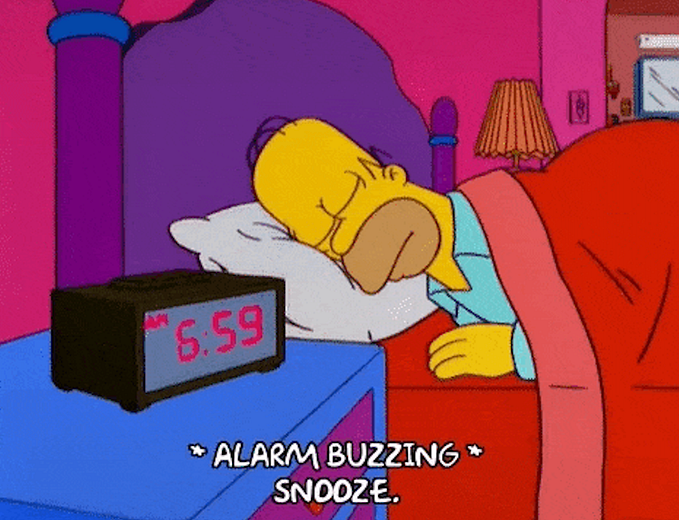Design, Data and the Roaring 90s: the creation of Nasdaq’s MarketSite
The Nasdaq Stock Market is celebrating the 20th anniversary of MarketSite, its real-time market activity site representing Nasdaq, listed companies and the global marketplace, and a landmark in the heart of Times Square, NYC. The launch of MarketSite is a significant coming of age milestone. With MarketSite, Nasdaq’s electronic market made itself accessible to the general public, to companies and to the news media. Ultimately, the story of its creation is a vignette of how technology and design intersected at a time of significant innovations in computers and the profound experience as a creative design consultant designing and bringing to life a growing stock market. The work that went into the creation of MarketSite spanned an entire decade, and was actually introduced in 1995 as the backdrop for financial reporting by the media such as CNBC and CNN and others from the US and abroad.
Before MarketSite, in spite of Nasdaq’s success and growth, people still thought of Nasdaq as a market for smaller companies, perception of Nasdaq hadn’t yet evolved. Executives at Nasdaq realized that without the physical presence of a central trading floor, unless you were a professional trader, you had little to no exposure to Nasdaq. The financial news used the NYSE trading floor as the backdrop when reporting on Nasdaq-listed companies. Executives and tourists would visit the NYSE trading floor, and VIPs would ring the opening market bell, a symbolic act to start the trading day.

Nasdaq’s constant worry was that one of their large companies may leave and move the NYSE. And it did happen, and perception was the reason.
This set Nasdaq into action. They hired a talented risk-taking marketing executive named Brian Holland. One of the first major initiatives he spearheaded was an advertising campaign, something that had never been done before by a stock market. Appropriately, the advertising’s theme was “Nasdaq, The Stock Market for the Next 100 Years”. The advertising appeared on television, radio and print, and focused on letting people know about the leading companies that were in fact on Nasdaq.
The advertising agency, Messner, Vetere, Berger, McNamee, Schmetterer who was hired by Holland, was considered a groundbreaking agency at the time. They, in turn hired our design firm Enock Inc., to envision a new corporate identity that would help transform the world’s perception of Nasdaq. In less dynamic times, things might have stopped there. But it was the 1990s, we were in the midst of brave new technologies, and seemingly endless possibilities. More was on the horizon.
In the early 1990s, the personal computer, the internet, email and cell phones all took hold. The world of graphic design was even further transformed. Apple computers and Adobe software made it possible to work on screen with photography, illustrations, typography and layouts to create powerful visuals and even animations. Prior to these new innovations, it was sketch pads and markers, clippings from magazines, glue, and rub down color transfers. Typographic specs were delivered to a type house for typography then returned to be pasted onto a layout by hand; rapidograph pens were used to draw line artwork. What used to take a week and a lot of back and forth was now happening in a day. It seemed this new technology put us on the front lines of new creative possibilities.
When we set out to tackle how to visualize the Nasdaq Stock Market, with all the new capabilities of computer graphics, we were able to make a creative leap, that Aha! moment, and envision that Nasdaq’s market data — graphs and charts of market activity along with logos of listed companies and stock prices could be utilized to help make the market more tangible. Visuals of market data with a distinct look that would be recognized as unique to Nasdaq, started to become featured elements in our designs.
It wasn’t long after, that we took this visualization idea to its next logical step. We were meeting at Nasdaq’s Washington, DC offices with Thomas Apple, another of Nasdaq’s risk taking marketing executives. We met to discuss installing in the DC offices, a series of Nasdaq’s trading screens for the purpose of displaying Nasdaq’s technology, in an attempt to make the market more tangible.
The idea of displaying hard to understand trading screens seemed less than ideal. It occurred to us why not create a screen-based display of market data specifically for the general public. This new display system would convey the market in real-time to investors. We expressed to Nasdaq that their current workstation was actually best kept in the “backroom”. From that moment forward the senior marketing team at Nasdaq saw that we could create a concrete representation of the Nasdaq market that was technologically advanced, just like Nasdaq, and would become the modern answer to the traditional trading floor.
The original idea of four trading screens in the lobby soon became eight, then 16, and finally, an impressive 55’ video wall made up of over 100 rear-projection video monitors was now going to be built in Nasdaq’s downtown New York City offices. Enock was asked to design the actual content for this “market wall”, deciding which data to display and how to visualize it. Two large rear projection cubes were installed in our design studio. We developed designs that included the opening and closing of the market, a variety of intra-day statistics including most active stock, leading advancers and decliners, as well as visualizations of traders or “market makers” activity in a given stock; aggregate price and volume activity, and how to incorporate financial news feeds. There was quite a buzz around one particular idea we had for a scrolling stock ticker using logos instead of trading symbols. Trading symbols were not easily recognizable unless memorized, and logos would bring brand recognition to the listed companies like Apple Computer, Microsoft, Intel, Biogen, and Amgen, which proved to set Nasdaq apart from their competitors. There was enough excitement behind that idea to patent the technology. As the work progressed we received thousands of computer disks with company logos for processing.

With the new advanced capabilities of software, there was a demand to use 3 dimensional graphs and charts for visualizing data. We had to first assess whether the 3D graphs and charts would appropriately represent the stock market data. None of the data we were working with seemed to require three dimensions to visualize them. We determined 3D visuals could, in some cases, actually make the data harder to understand, so even though it was enticing, we decided to forego using 3D. The resulting look and feel of the display was bold, blue and flat, ultimately becoming a recognizable look, an identity unique to Nasdaq and MarketSite. Fast forward to 2020, the look Enock created for presenting market information is still influencing print and television financial news reports around the world.
After two full years of development, a milestone in the process was the presentation to Nasdaq’s board of directors, requesting approval to proceed with full implementation of MarketSite. With much enthusiasm, the board voted to move forward with the project. A smaller mini version of the electronic display was created with a simulation of real-time market data graphics to convey the idea and hopefully generate excitement. Presenting to the board was a crucial moment, as luck has it, there were ironically many technical glitches that added to the overall suspense.
When MarketSite first opened its doors in 1995, the office was located in lower Manhattan on Whitehall Street on the 9th floor. At the time, the space was not open to the public however, the newly designed space became the backdrop for television news reporting. Nasdaq then started to consider moving to a public space. Enock proposed a move to Times Square could quite possibly be the best location with its electronic billboards and pedestrian and vehicle traffic. The prospect that a stock market would be located in the heart of Times Square, traditionally a place for kitschy entertainment, was at first a stretch. We were on a mission to find the ultimate location, and with constant nudging, Nasdaq warmed up to the idea. Nasdaq secured an exciting location on the bustling corner of 43rd street and Broadway in 4 Times Square. The south/east street-front exposure was ideal. The building was equipped with a massive ten story tall cylindrical tower for a large screen outdoor display. The site space would provide access to view the MarketSite wall, a visitor center, interactive kiosks and a store with branded items for sale. A professional space in front of the wall for broadcasting was also constructed. A second wave of design and technology development commenced as we worked towards making MarketSite in the heart of Times Square a reality. Other financial institutions eventually followed suit. Electronic stock market signage was being built, shifting the personality of Times Square, wall street and times square had met.
During the same time period, in 1994, there came another project that would also involve market data — an opportunity for Enock Inc. to create Nasdaq’s first website on the fledgling internet. Because of our experience building and developing MarketSite, everyone involved, Nasdaq and Enock alike, knew this was not going to be a static marketing website. Instead It would deliver real-time (15 minute delayed) market data.
Both the Nasdaq MarketSite and Nasdaq-com would go on to assist in promoting markets and investing to the general public. It felt like we were democratizing access to investing in stocks, and that everyone would be involved in experiencing the financial benefits of the markets.
The work we did is an example of how solving a marketing problem can bleed over into designing a product or service. By identifying market data as a way to represent the market, Nasdaq MarketSite and Nasdaq-com were able to take shape and became important data services of the market. This kind of bleeding over was just starting to be recognized as providing a lot of value and encouraged in the advertising and marketing disciplines.

Today this discussion continues as people look at using “design thinking” to solve broader social and business problems. These early Nasdaq projects benefited from design thinking at the time and are a great example of how designers can take complexity and look for meaning and relatedness among disparate elements.

And so came New Years eve 2000 and the new millennium celebration in Times Square, and MarketSite was launching. We had designed special animations for the new large screen tower portion of the site, starting with an animation synchronized with the dropping of the New Year’s Eve ball. We wanted everyone in Times Square to take notice of Nasdaq. It was an exciting opening event. The celebration was broadcast live around the world and seen by over one billion viewers. From that day on the MarketSite successfully put Nasdaq’s imprint out to the world as a top market and solidified its position by providing a high tech real time representation of the market. A facility to celebrate the amazing effects of capital markets enabling ventures of astounding size and technical sophistication to access capital and grow. The 1990s had been the perfect time for the creation of MarketSite, stocks were on the upward trajectory throughout the decade, and technological innovation was king.









